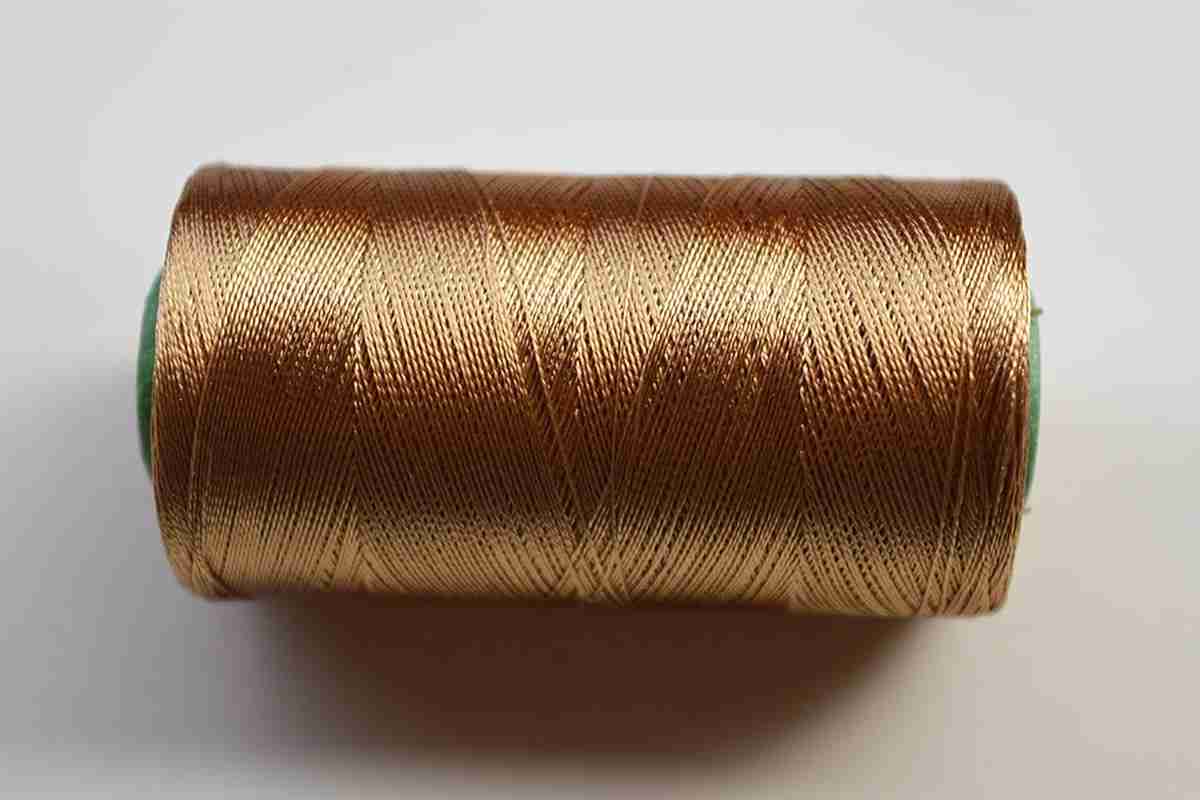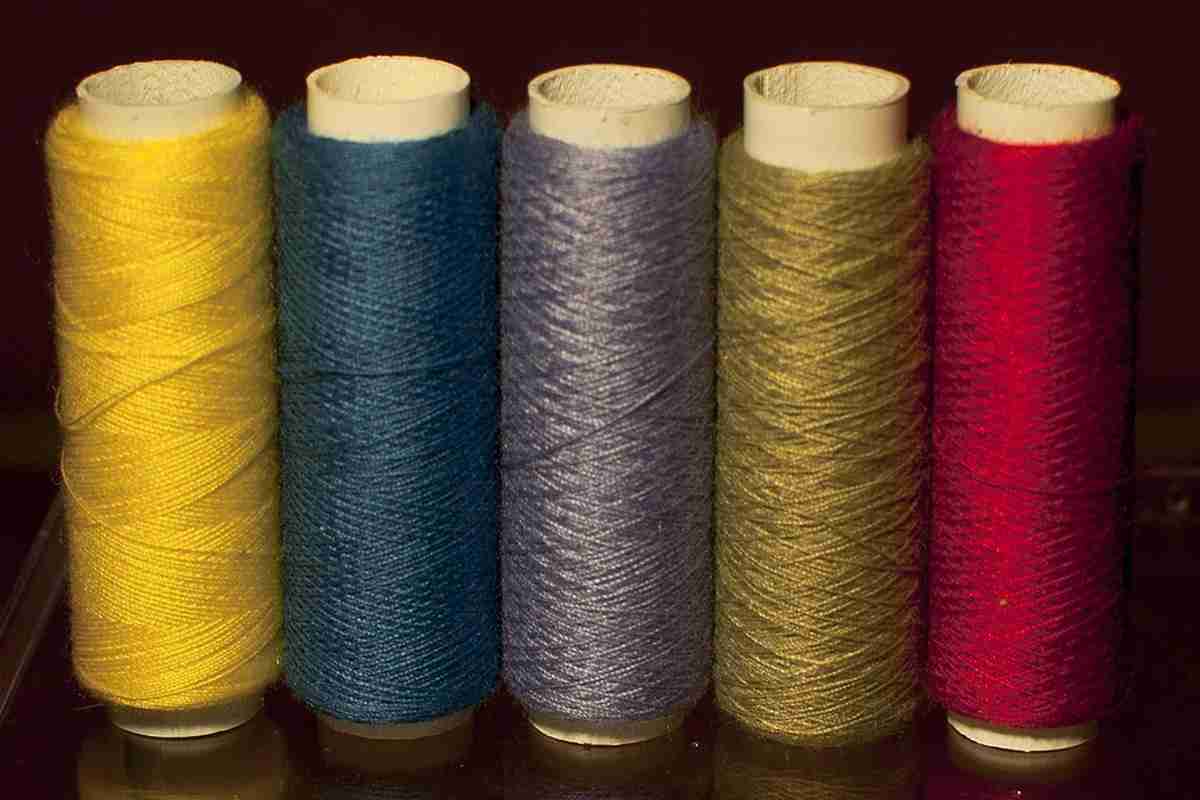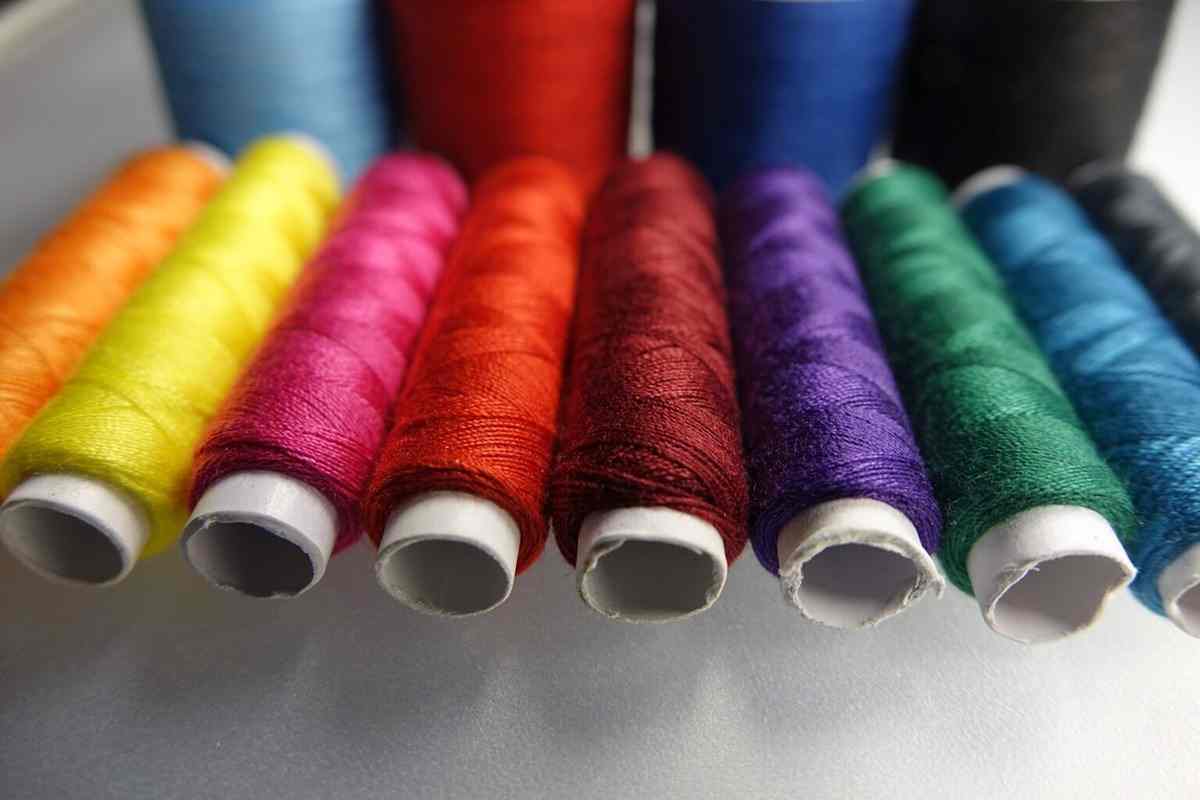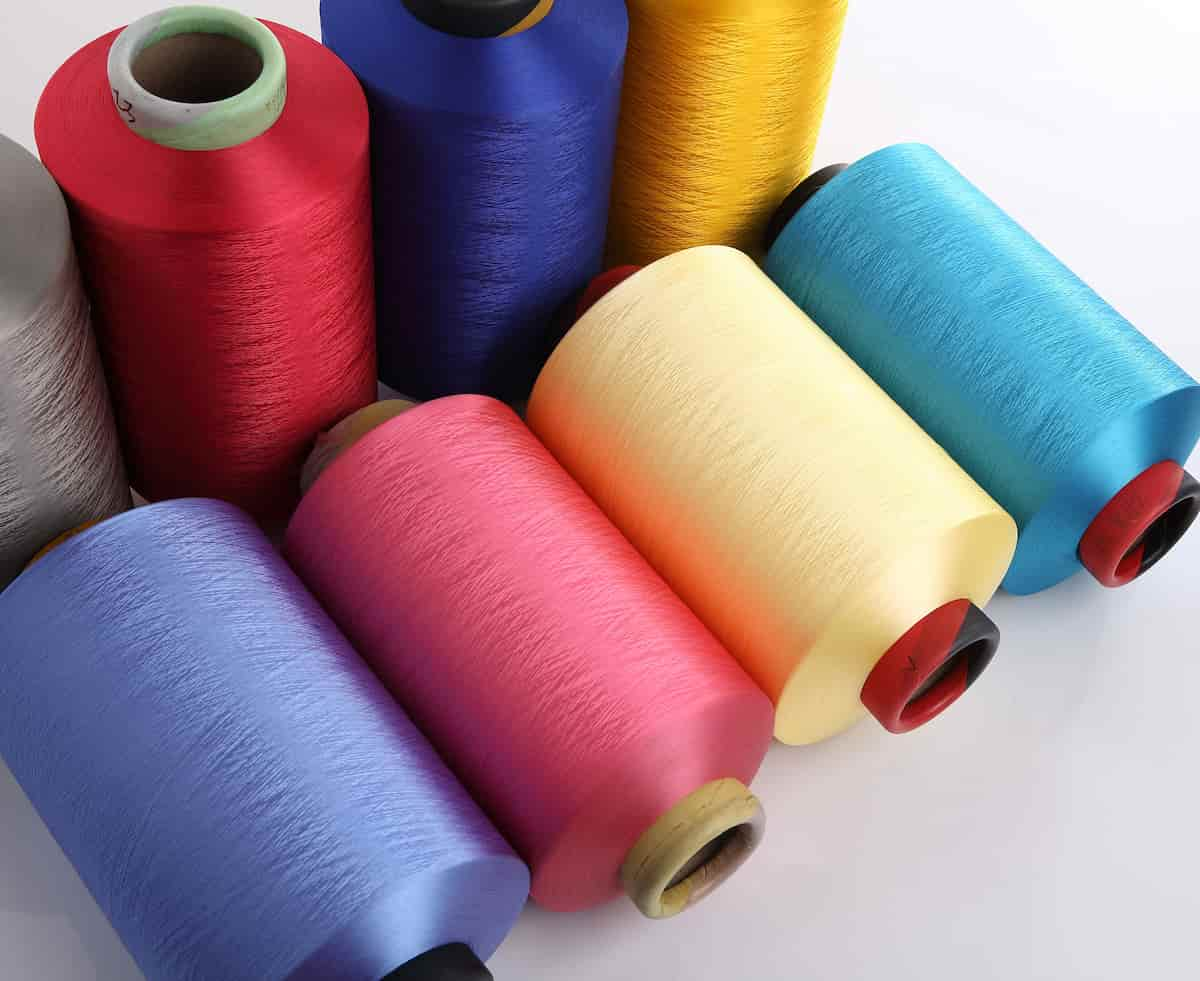What is the best silk thread?
You might wonder about the process of making silk thread from cocoon and the history of how silk is made. First let's figure out how silkworms make silk.
silk thread kundan bangles
Liquid silk completely fills the body of a mature silkworm that is about to enter its pupal stage. The digested mulberry leaves are the basis for the production of liquid silk, which, like human hair, is composed of proteins.
This liquid is transformed into a physical silk thread by the caterpillar, which does it with the assistance of specialized salivary glands found in its head.
The silkworm has two salivary glands that are modified and located near its lower jaw. These glands are called sericteries.
These glands, which are responsible for the production of silk, release a transparent fluid that, when it comes into touch with air, solidifies into a delicate silk thread.
This fluid is mostly composed of a protein class known as fibroin, and it has a watery consistency.
These same glands are also capable of simultaneously secreting a second protein known as sericin, which is a gelatinous material.
The fibroin proteins are coated in sericin proteins, which serve as a sort of adhesive for the structure. Because of this coating, the two strands of silk produced by the two glands can now adhere to one another.
A silkworm will continue to spin its cocoon with the assistance of its silk glands until all of the liquid silk that is contained within its body has been used up.
While it is spinning, the caterpillar will move its head around in a circular motion to ensure that the silk fiber completely envelops its body.

It does this out of reflex to protect itself from potential threats when it is in the process of pupating. In order to complete its cocoon, a silkworm needs around three days to work.
at a speed of approximately 30 to 40 centimeters of silk each minute. The finished product will be a cocoon formed from a single strand of silk that is up to 1600 meters long.
The Process of Producing Silk Thread and Silk FabricsThe process of manufacturing silk yarn can begin once the cocoons have been opened and the silkworms have completed their metamorphosis into pupae inside of them.
- 1. Harvesting
To begin, the cocoons must be collected from the mountages where they are hanging. After the silkworms have been busy spinning their cocoons for around 7 or 8 days, it is time to harvest the cocoons.
It is possible to determine whether or not the pupae have finished developing by slicing open a few cocoons. Pupae that have completed their metamorphosis are brittle and brown in appearance.
Cocoons are selected by hand with great care to prevent any damage from occurring to the fragile silk fibers during the process.
- 2. Stifling & Sorting
Killing the pupa inside the cocoons is necessary in order to prevent the pupa from hatching and destroying the silk cocoons they are contained in. Stifling is the name given to this technique, which is often carried out with hot air or steam.
The cocoon will get drier as a result of the stifling, which will allow it to be stored for a longer period of time. After that, the cocoons can be sorted according to quality and features such as the length, form, color, and sheen of the silk fibers contained within them.

silk thread kundan bangles price
There is a possibility that some cocoons will be discarded since it will be determined that they cannot be processed any further. Urine stains, mold growth, and holes in the cocoon are all examples of flaws that can occur in cocoons.
- 3. Boiling
The cocoons will be heated once more once they have been stifled in order to get them ready for the unreeling process. The cocoons are loosened up by placing them in hot water for a while.
Cooking the cocoons makes it much simpler to locate the end of the single strand of silk fiber that composes each cocoon. Additionally, it makes it less difficult to unwind them.
The silk is made more pliable when the cocoons are boiled, which is still another advantage of the process. The degumming process begins when the cocoons are cooked, which kicks off the cooking process. The process of degumming involves removing the sericin proteins that are found in the silk fiber.
Sericin is a protein that has a gelatinous consistency and coats the other protein found in silk, which is known as fibroin.
A bond can be formed between two filaments of filk thanks to sericin. Silk is more difficult to color as a result of the sericin because it has a slightly rougher texture as a result of the sericin.
When the cocoons are cooked, the sericin protein, which is normally somewhat rigid, becomes more pliable, and the cocoons themselves have a smoother texture and feel.
- 4. Deflossing
Even after being cooked, the surface of the cocoons may still be covered in some stray fiber, giving the impression that the cocoons are fuzzy.

silk thread bangles
This uneven and fuzzy layer is made up of shattered strands of silk filaments. The term "deflossing" refers to the procedure through which the loose fiber is extracted from the cocoons.
The cocoons are given a clean appearance by deflossing, which also makes it simpler to treat the cocoons further and boosts their worth on the market.
- 5. Reeling
During the reeling stage of the manufacture of silk, cocoons of silk are transformed into strands of silk yarn via a technique called "reeling."
The cocoon is unrolled and then reeled, which is the process of combining multiple strands of silk filament into a single strand of silk.
The process of reeling used to be done by hand, but these days most of it is done automatically by machines. During the reeling process, the machine's revolving brushes grab the end of the silk filament that was extracted from the cocoon.
After that, the rapidly turning reel removes the silk from the cocoon while simultaneously drying it.
One strand of silk is insufficient for use on its own because of how thin it is. In order to create a single strand of silk yarn, the filaments that come from a number of cocoons are combined and reeled together at the same time.
The thickness of the silk yarn can be achieved by using anywhere from two to twenty times the number of cocoons that have been reeled together.
Because the fibers that make up silk are so thin and delicate, it takes approximately 2500 cocoons to produce one pound of silk.

silk thread jewellery
After the cocoons have been unraveled, the surviving silkworm pupae are occasionally conserved and exported to countries such as China, South Korea, and Thailand, where they are prepared as part of meals or consumed as snacks.
- 6. Twisting & Dying
After the process of reeling has been finished, the individual strands of silk yarn are unwound from the reels. After that, the silk is twisted into spiral circles so that it can be formed into bundles. Skeins are another name for these bundled up balls of yarn.
Either the amount of twist that is already there in a silk thread can be increased, or additional silk threads can be introduced and twisted together.
The amount of twisting that must be done is determined by the type of fabric that the silk will eventually be woven into.
The silk yarn, once it has been twisted, is next prepared to be colored. You have the option of dying the silk either prior to or subsequent to the process of weaving the silk thread into garments.
Because of the nature of the fibroin proteins that make up the majority of silk, coloring silk is a relatively simple process.
Silk has a natural ability to readily absorb dye, which results in brilliant hues once applied. Due to the presence of both positive and negative ions in silk, virtually all commercial colors can be successfully applied to this natural fiber.
After being twisted and dyed, the silk threads are wound into spools or tubes for further processing. The silk yarn is now ready to be used in the production of woven goods or to be sold.

silk thread earrings
- 7. Weaving
Weaving the strands together results in the production of silk fabric from silk yarn. Silk can be woven in a variety of different ways.
Charmeuse, which is more commonly referred to as satin, is the name of one of the most used weaving techniques for silk.
charmeuse weave is a very close weave that produces a silk fabric that is glossy and soft to the touch. Fabrics made of silk charmeuse have a shiny appearance but a matte reverse side.
Floating the longitudinal thread over three or more transverse threads yields the desired appearance here.
Silk chiffon, silk twill, silk crepe, and silk habotai are some of the other common types of weaves that may be made with silk.
The silk yarn is layered and woven in a distinctive manner in each of these weaves, which ends up producing fabrics with a variety of distinct textures and visual appearances.
The final silk fabrics can be fashioned into a wide variety of silk goods, including but not limited to silk scarves, shirts, ties, pocket squares, and more. The production of silk has reached its conclusion at this point.
The long-guarded secret and history of how silk is made has finally been revealed. It is difficult to believe that the method of producing silk was kept a secret for such a prolonged period of time.
It appears that this discovery, like a great number of other important ones, was made by accident. The story goes that about four thousand years ago, an empress was sipping her tea in a garden full of mulberries when all of a sudden, a cocoon fell into her cup.
While she was fishing it out, she managed to grab hold of the tail end of the silk filament and began unraveling the cocoon.
We'll never know if there's any truth to the story, but the fact of the matter is that if you try the same thing at home, you have a good chance of being successful.

The history of silk
When submerged in warm water, a cocoon will eventually unravel. The only thing you need to do is locate the point where the filament ends and then pull.
Naturally, it will take you some time to locate the conclusion, and once you do, you'll have to unwind the rope for a very, very long time... approximately 1,000 meters long (that's almost 11 American football fields lined up end to end).
Naturally, there is no limit to the inventive potential of humans, particularly when it comes to reducing the amount of labor required.
Our ancestors eventually devised the reeling mill because they grew tired of manually unwinding cocoons. Mills used to be located all over Europe, in cities such as Lyon, Genoa, and Valencia.
Countries with climates that were significantly cooler, such as the United Kingdom and Germany, also had their own silk reeling mills.
The majority of the world's reeling mills are located in regions where natural silk is produced locally, such as China and India. Because of this, the opportunity to visit one of these mills does not present itself on a daily basis.
You can probably imagine, then, that when the opportunity arose, I seized it with both hands and ran with it. Karnataka, which is located in southern India, was the destination of my silk shopping trip.
After having been to a cocoon market in the past, my curiosity was peaked, and I wanted to learn more about what comes next.
Divakar, our resident authority on all things related to silk, once again organized the trip and provided insightful commentary for us during it.
Our company is prepared to provide silk cocoons, silk fabric and silk thread to customers and business owners around the globe.
We have built trust with our customers by providing the best quality products we have to offer. Therefore, our cooperation has lasted for a long time.
If you would like to gain more information about our products, do not hesitate to contact our consultants who are available 24/7 to answer all your questions.
How useful is this article to you?
Average Score
5
/
Number of votes:
1






